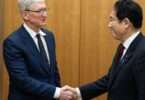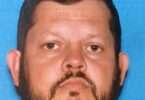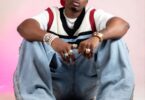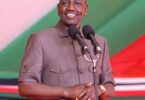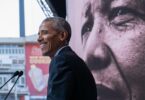Early Life and conformation
Jorge Mario Bergoglio, who would come Pope Francis, was born on December 17, 1936, in Buenos Aires, Argentina, to Italian emigrants Mario José Bergoglio and Regina María Sívori. The eldest of five children, Jorge grew up in the vibrant, working- class neighborhood of Flores, where the measures of tango, soccer, and faith shaped his early times. His father, a road worker, and his mama , a partner, fostered a deeply unqualified ménage, attending Mass regularly and breeding values of modesty and compassion. Young Jorge was a cheerful boy, passionate about soccer and a lifelong addict of the San Lorenzo de Almagro club, a detail that latterly endeared him to Argentinians.

At 21, Jorge faced a life- altering health extremity when a severe lung infection needed the junking of part of his right lung. This encounter with mortality strengthened his sense of gratefulness and purpose, planting seeds for his spiritual trip. Academically blessed, he trained as a chemical technician and worked in a laboratory, but his heart was away. On September 21, 1953, while visiting a church for concession, the 17- time-old endured a profound hassle with God’s mercy, which he latterly described as a transformative call to serve. This moment set him on the path to the priesthood.
In 1958, Jorge entered the Society of Jesus, beginning his conformation as a Jesuit. The Jesuits’ emphasis on intellectual rigor, social justice, and missionary zeal shaped his worldview. He studied humanities, gospel, and theology, and tutored literature and psychology at Jesuit seminaries in Santa Fe and Buenos Aires. His warmth and availability made him a cherished preceptor. On December 13, 1969, at age 33, he was ordained a clerk, embarking on a ministry concentrated on the poor and marginalized.
Leadership in Turbulent Times
In 1973, Bergoglio was named parochial superior of the Jesuits in Argentina, a part he held during a dark period in the nation’s history. The country faced profitable fermentation, political violence, and the rise of a brutal military absolutism( 1976 – 1983). As parochial, he navigated complex challenges, guarding Jesuits and others from the governance’s suppression.

His discreet approach saved lives but drew review from some who felt he should have openly opposed the absolutism. Times latterly, Bergoglio expressed remorse for not doing further, a reflection that underlined his modesty.
After his term as parochial, he served as rector of the Colegio Máximo, a Jesuit seminary, continuing his work as an preceptor and pastor. In 1992, his life took a new turn when he was appointed supplementary bishop of Buenos Aires. Ordained a bishop on June 27, 1992, he embraced a simple life, living in a modest apartment and traveling by machine. In 1998, he came Archbishop of Buenos Aires, succeeding Cardinal Antonio Quarracino. As archbishop, Bergoglio came known for his pastoral heart, constantly visiting the megacity’s slums, or “ estates miseria, ” to celebrate Mass and endorse for the poor. His homilies dived social issues like inequality and corruption, earning both admiration and hostility.
In 2001, Pope John Paul II named him a cardinal, feting his growing influence. Bergoglio shared in the 2005 conclave that tagged Pope Benedict XVI, where he reportedly surfaced as a strong contender. Returning to Buenos Aires, he continued his work with modesty, fastening on interfaith dialogue and addressing challenges like secularization and the rise of evangelical movements in Latin America.
Election as Pope
On February 11, 2013, Pope Benedict XVI’s major abdication stunned the world, paving the way for a new conclave. On March 12, 2013, cardinals gathered in the Sistine Tabernacle, and on March 13, after five ballots, 76- time-old Jorge Bergoglio was tagged the 266th pope. Choosing the name Francis, inspired by St. Francis of Assisi, he gestured his commitment to the poor and creation. His election pronounced major firsts the first Jesuit pope, the first from the Americas, and the firstnon-European pope in over 1,200 times.

Appearing on the deck of St. Peter’s Basilica, Francis saluted the crowd with a simple “ Buona sera ”( Good evening), his warm smile witching millions. Dressed in plain white vestments, he asked the faithful to supplicate for him before offering his blessing, a gesture of modesty that defined his papacy. His choice to live in the modest Casa Santa Marta guesthouse rather than the Apostolic Palace further underlined his commitment to simplicity.
A Papacy of Mercy and Reform
Pope Francis’ papacy, gauging over a decade, was a transformative chapter in the Catholic Church’s history. From the onset, he emphasized mercy, addition, and a “ Church that goes out ” to the perimeters. His early acts — washing the bases of captures, deportees, and Muslims during Holy Thursday millions — captured the world’s imagination. He sought to reform the Church, diving issues like clericalism, fiscal nebulosity, and the church abuse extremity.

In 2015, Francis issued Laudato Si’, a groundbreaking encyclical on environmental stewardship, prompting global action on climate change. In 2016, Amoris Laetitia addressed family life, sparking debate with its nuanced approach to separated and married Catholics. He reformed the Vatican Curia, creating new dicasteries and appointing different leaders, though resistance from reactionaries braked progress. His running of the church abuse extremity evolved over time; early mistakes gave way to stronger measures, including a 2019 peak and new laws to hold bishops responsible.
Francis’ global outreach was unequaled . He visited over 60 countries, from Cuba to Iraq, promoting peace, interfaith dialogue, and solidarity with settlers. His 2015 visit to the United States, where he addressed Congress, and his 2021 trip to Iraq, meeting Grand Ayatollah Ali al- Sistani, showcased his politic influence. He intermediated conflicts, similar as the 2014 Cuba- U.S. fellowship, and constantly supported for the marginalized, earning the title “ Pope of the perimeters. ”
Challenges and Difficulties
Francis’ papacy was n’t without challenges. Conservative coalitions within the Church blamed his reforms and theological openness, with some criminating him of lacing doctrine. His emphasis on synodality — a cooperative approach to Church governance — unsettled reactionaries. Health issues, including sciatica, a 2021 colon surgery, and respiratory challenges, tested his adaptability, yet he continued his rigorous schedule into his late 80s.

The church abuse extremity remained a patient shadow. While Francis took way to address it, survivors and lawyers frequently felt his response fell suddenly. His original defense of certain bishops, latterly proven reproachable, drew review, though he latterly conceded miscalculations and sought remission. Geopolitically, his calls for peace in conflicts like Ukraine and Gaza were sincere but occasionally supposed ineffective against settled powers.
Latterly Times and Passing
As Francis entered his late 80s, his health declined, but his spirit remained insuperable. He reckoned on a wheelchair but continued to engage with the faithful, issuing jottings like Fratelli Tutti(2020) on global fraternity and hosting synods to shape the Church’s future. His humor and warmth shone through, as when he fooled, “ I’m still alive! ” after a 2023 sanitarium stay.
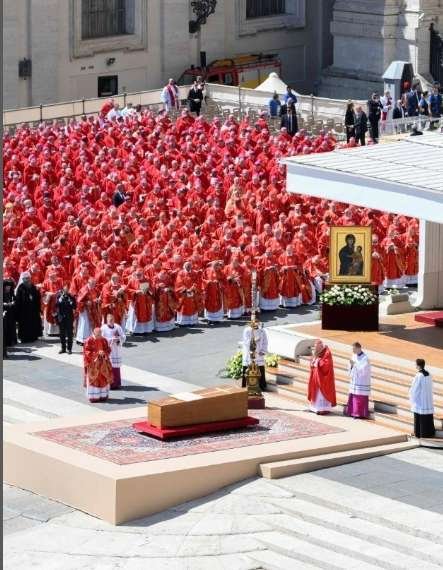
In this imagined narrative, Pope Francis passed away peacefully on March 13, 2025, the 12th anniversary of his election, at Casa Santa Marta, girdled by close helpers and soliciting the Rosary. His death at 88 urged an outpour of grief worldwide. Millions crowded to St. Peter’s Square, and leaders from every faith and nation mourned the loss of a moral lamp. His burial, attended by millions, was a testament to his universal appeal, with paeans pressing his simplicity and love for the poor.

Heritage
Pope Francis’ heritage endures as one of metamorphosis and compassion. He reshaped the papacy, making it more accessible and pastoral, and inspired a Church that embraces the marginalized. His environmental advocacy electrified global action, while his interfaith sweats bridged divides. The Synod on Synodality, climaxing in 2024, laid the root for a further inclusive Church, though debates over his reforms persist.

His successor faced the daunting task of structure on his vision. Francis’ life — from a Buenos Aires druggist to the “People’s Pope” — reminded the world that faith, embedded in modesty and service, could move mountains. His final words, reportedly, were, “Keep walking with joy.” For generations, his illustration would inspire millions to do just that.



